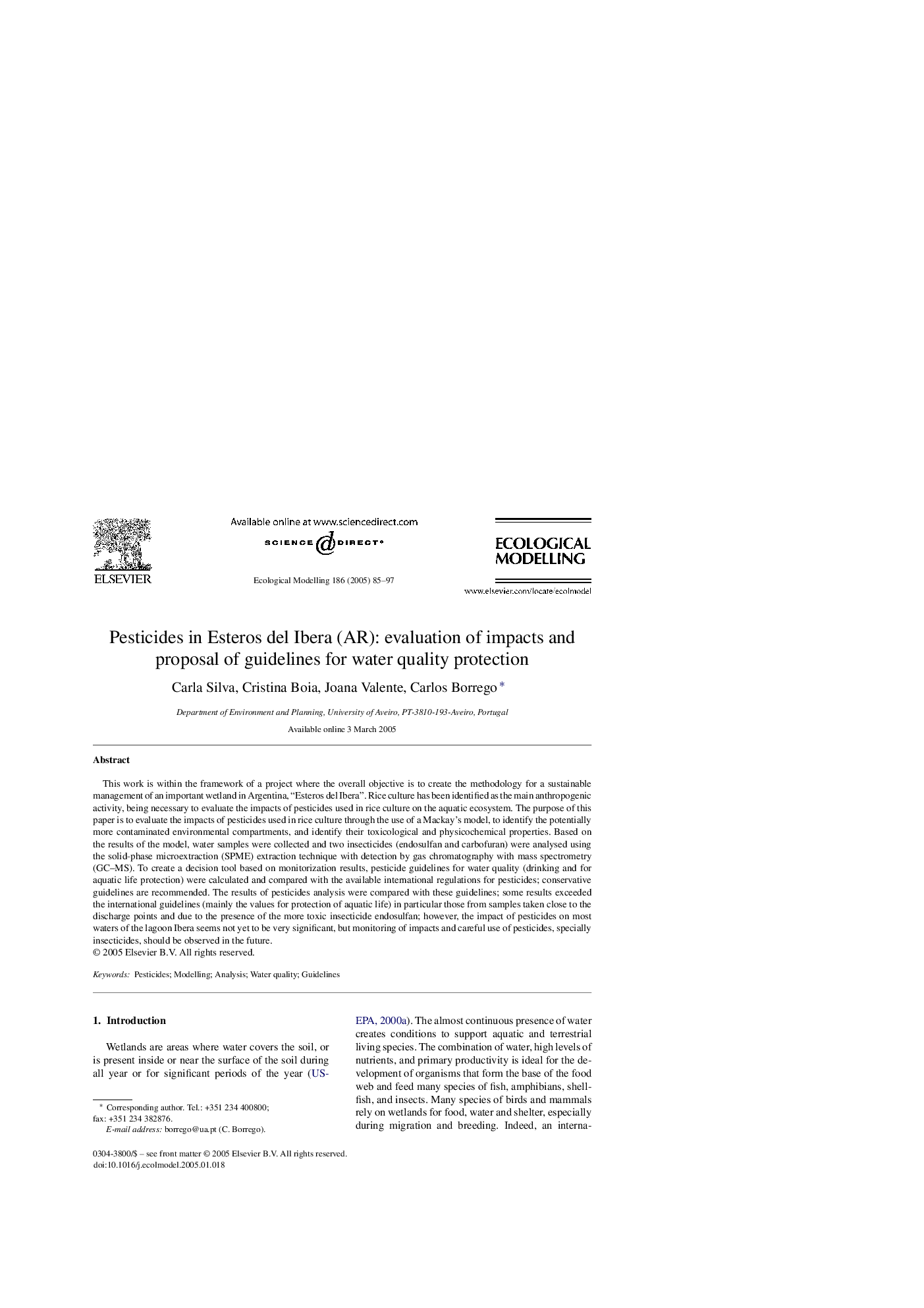| Article ID | Journal | Published Year | Pages | File Type |
|---|---|---|---|---|
| 9443366 | Ecological Modelling | 2005 | 13 Pages |
Abstract
This work is within the framework of a project where the overall objective is to create the methodology for a sustainable management of an important wetland in Argentina, “Esteros del Ibera”. Rice culture has been identified as the main anthropogenic activity, being necessary to evaluate the impacts of pesticides used in rice culture on the aquatic ecosystem. The purpose of this paper is to evaluate the impacts of pesticides used in rice culture through the use of a Mackay's model, to identify the potentially more contaminated environmental compartments, and identify their toxicological and physicochemical properties. Based on the results of the model, water samples were collected and two insecticides (endosulfan and carbofuran) were analysed using the solid-phase microextraction (SPME) extraction technique with detection by gas chromatography with mass spectrometry (GC-MS). To create a decision tool based on monitorization results, pesticide guidelines for water quality (drinking and for aquatic life protection) were calculated and compared with the available international regulations for pesticides; conservative guidelines are recommended. The results of pesticides analysis were compared with these guidelines; some results exceeded the international guidelines (mainly the values for protection of aquatic life) in particular those from samples taken close to the discharge points and due to the presence of the more toxic insecticide endosulfan; however, the impact of pesticides on most waters of the lagoon Ibera seems not yet to be very significant, but monitoring of impacts and careful use of pesticides, specially insecticides, should be observed in the future.
Related Topics
Life Sciences
Agricultural and Biological Sciences
Ecology, Evolution, Behavior and Systematics
Authors
Carla Silva, Cristina Boia, Joana Valente, Carlos Borrego,
